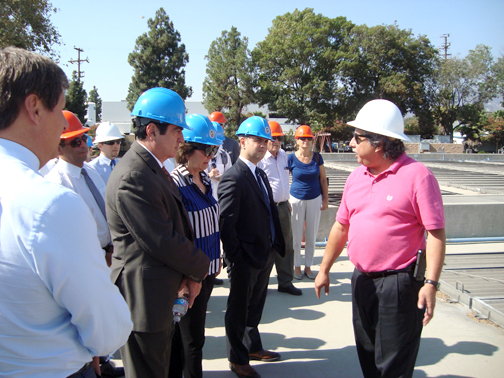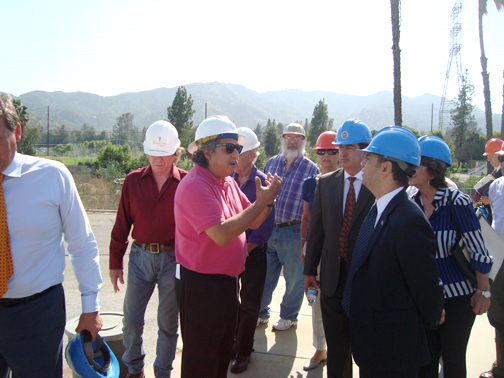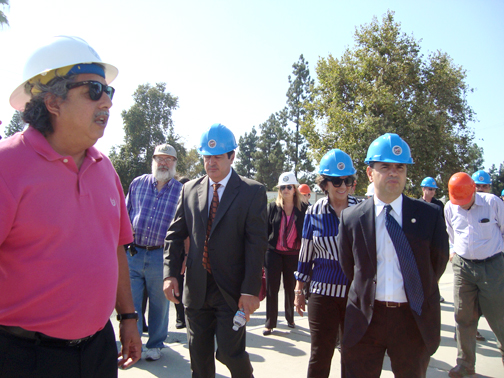
By Jason KUROSU
The Glendale City Council continued its series of workboot meetings Tuesday afternoon with a closer look at the daily operations of the Los Angeles Glendale Water Reclamation Plant (LAGWRP), which has been jointly owned by the cities of Glendale and Los Angeles since 1973.
Council members learned how the city handles sewage treatment, water recycling, infrastructure maintenance and more from discussions with members of the Public Works Department and a guided tour of the facility.
Glendale Public Works Director Roubik Golanian said the Public Works Department is responsible for “400 miles of sewers, 350 miles of streets, 30 miles of alleys, 40,000 signs, 47,000 parkway trees, 28 parking lots, four parking garages, and the list goes on and on.”
But for Tuesday’s meeting, members of the Public Works Department focused on giving the council an in-depth look at the city’s sewer system.
The City Council held its fourth workboot meeting at the plant after recently approving a $14 million sewer project that will see 4,300 feet of sewer pipeline installed from Chevy Chase Drive to Colorado Boulevard in Los Angeles. City Manager Scott Ochoa said that the Chevy Chase Sewer Diversion Project “will allow us to divert a larger amount of the conveyance from Glendale to this facility and thus, save us about a million dollars a year.”
Glendale pays sewage and treatment fees to the city of Los Angeles for sewage that flows to L.A.’s Hyperion Treatment Plant, sewage that would be diverted to LAGWRP as a result of the project.

John Hicks, Glendale Public Works Wastewater superintendent, said that many of the city’s pipes are 85 to 95 years old and have sustained structural damage over the years. Golanian said that the Chevy Chase Sewer Diversion Project will bring the city up to 90% of the way toward replacing Glendale’s aging pipes.
The project will also include a 1,600 foot extension of a recycled water main for use by city employees for services provided street sweepers, water trucks and sanitary sewer hydro-flushers. City employees could refill their vehicles with recycled water at various locations and will save the city millions of gallons in water usage in the process, officials say.
Construction of the sewer pipelines will be completed in spring of 2017.
At the conclusion of the meeting, council members and members of the public in attendance donned hardhats and viewed the plant’s aeration tanks, where wastewater is treated through a combination of open air and bacteria added to the sewage to break down the wastes.
The council’s next workboot meeting will be at the Scholl Canyon Landfill on Sept. 15. The Beeline Bus System will also be addressed in a future workboot meeting. 
